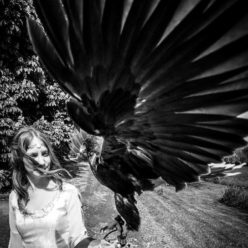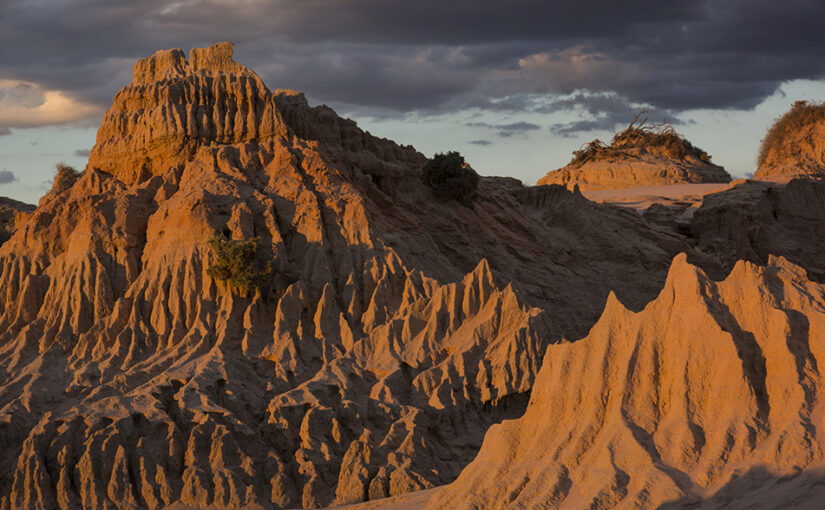Things have been quiet. For everyone. Remember all that optimistic bullshit I pulled back in March about how we ought to appreciate ‘stillness?’ What a dickhead. Well, my fearless optimism dried up along with all the facebook photos I saw of idyllic family breakfasts after the weather turned and we all hunkered down for a sulky winter. The sunrises stopped being glorious and we watched plan after plan get cancelled until loneliness took hold deep in the gut.
I wrote. I wrote quite a lot, actually. I’ve even had more poems accepted and recently have been commended by the Rose Frankcombe award. It was in between a lot of the usual procrastination, facebook flicking and self-loathing that accompanies all that. Was that balanced by the writing? I suppose. And in it all, me and the Gentleman still had each other, a home, food and jobs and nothing to complain about. Beyond getting a bit ratty at each other from spending a looooooot of time together.
At last, Something Happened. After Queensland closed its borders and shat on our plans for dawn boat rides spotting marvellous birds on the Daintree, we thought ‘fuck it;’ hired a car, and drove Out Back. This is the story of those adventures.
Part I – Griffith to Mungo. Jingle Jangle
To get the title out of the way, Yates and I did not so much find God on our journey as Nick Cave, which might be nearer the Truth. I know he’s a genius and I am totally late to that party, but I’m glad I came. We’d been saying that Screaming Trees’ Dust totally became the album of Encharnted – having recently discovered it in 2015 thanks to Tom Shepherd and listening to it while driving to and from the boat when we first moved on. Remember when we were young, and music was so important, and albums became soundtracks to our adventures and hearts? The way Beck and I can’t listen to Smashing Pumpkins 1979 without remembering sitting at the castle looking down on Vilnius, or hear the Chili Peppers without thinking of Cornwall or driving to Freeman’s and trying to find cyclists to get stuck behind so we could sing along longer. For an epic road trip, we needed an anthem, so, being Australian, we downloaded Nick Cave’s Let Love In and dutifully learned all the words over 1000km.
The way to Griffith is paved with grain silos and railways. We chuckled at that. And Griffith is a funny little place. Of course, by the time we got to the end of the week it was a palatial metropolis by comparison and, I am certain, provides a life for its inhabitants that is rich and full. It is surrounded by vineyards and citrus orchards which is very beautiful, and boasts a radial design as the Burley Griffin trademark city plan so we went for a drive round it. S’got a forgotten few units and warehouses marking its splayed streets. Nothing too exciting. Then it all gets a bit Ainslie, as you drive up the hill and there is crumbly red earth and trees backing on to people’s houses. Above the city in the hill are the remains of a beautiful cave hermitage, furtively constructed by Valerio Ricetti over 20 or so years. He carried stone and built walls, decorated the cave walls with paintings of daisies, planted himself a little garden. Surprisingly, none of it has been obviously heritage maintained. During WW2, being Italian and all, he was arrested, taken away from his cave and never really returned. I think this is sad. I have little truck with the romance of the hermitage – animals and humans living in complex social groups have been proven to be more intelligent (Ackerman, 2020), or for the perceived ‘harmlessness’ of shunning society rather than contributing to it. But he called the hill ‘la mia sacra collina,’ sacred hill. Perhaps as a person who perceived the holiness and intrinsic beauty in the permanence of rocks and plants, and lived with them for their own and his sake, never having more than he needed, he had much in common with the first people who lived among those rocks and plains until only 200 years ago. Anyway, poetic whimsy aside, we cheered when we found a canal, cheered when we stayed in our poky little hotel for hitting the first ‘everyone looks at you when you walk in’ pub; we ate a damn good Italian and tried the local sticky wine at De Bertoli. Although Griffith’s streets did not display the pinnacle Australian Athletic Stereotype, on a sunny day it is open, beautiful, full of wine and good food, with hills to stroll around and enough to do. If Griffith asked: Do you love me? We’d say Not like I love you, but pretty well.
Then we drove to Lake Mungo. This is a marvellous place where you really love and understand place for the very sake of itself. And Space. I’ve read many novels about the Australian countryside that describe it as miles upon miles of barren nothing. I find this offensive; it shows a lack of respect to the land and not least a lack of imagination, a lack of vision. Admittedly, it was a bit edgy driving deeper and deeper into wide bush on unsealed roads watching the petrol tank click down. You realise remoteness matters if you encounter a problem. Then after more miles of more scrub bushes and a howling wind you start to feel lonely. What the hell are we going to do in this place for two days? We ate an elaborate picnic balanced on our knees in the car, watching a silver screen panoramic drama of storms throwing down around us. Spoiler alert – we got away with a whole 2 nights of not actually being rained on, which was awesome, but as we counted seven showers around us smearing the sharp line of the horizon, it seemed impossible to escape. That horizon was huge and far away. I realised from my love of mountains that I like to close myself in a bit, find corners and edges to understand; this thing here, is against that thing there, is different from this over here; I put my back against the wall of a hill as a way of breaking up the frighteningness of space. But eventually unbroken space peels open your eyes, cracks your skull and chest open so you can take it in. Maybe wide spaces widen the mind, widen the heart. We watched the spectacle of rain, whole tragedies of storms play out against the theatre of all that sky, and rainbow after rainbow poured its cascades of colour into the empty lakebed.
Mungo was a huuuuuge lake; horizon to horizon in every direction for a solid 20000 years 60000 years ago. Neat. It’s part of the Wallandra lake system filled up by overflows from the Lachlan river and bits of the Darling river. Remember that for your next pub quiz. It was a stable bounty of food, both fish and water birds among other things and supported thousands of permanently placed people. It dried out and refilled, got salty, dried out during the ice age, refilled; causing the permanent population to move about a bit more. It eventually dried out again 18000 years ago which is where we are now. The ground is clay and sand and 20000 year old footprints have been preserved there. It has these lunettes; clay ….sort of…totally out of my expertise here…hills that were gathered up at one end in a crescent shape from the wind, then sand covered them…because, wind and now they’re eroding. They are fascinating beautiful shapes in white and grey and red sand, and as they erode a whole bunch of stuff falls out, proving Aboriginal culture was thriving there 50000 years ago. Those interested in archaeology, Lake Mungo is the site of the oldest human remains found outside Africa.
Anyway, that’s why we drove five hours on unsealed red roads through rain to get there. We camped, it was fucken cold, we lit a fire and all the smoke blew in my face, so we got into the tent and read Pratchett. The next day we got up for sunrise which was impeded by clouds, so we heated some banana bread and I did a whole bunch of Joe Wicks exercises to warm the hell up. It worked. Think I might do my own travel tour where I camp around the world and film youtube vids of me working out called the ‘Thanks Joe Wicks’ tour. We went for a walk. We did a good 4 hours of marching about, seeing kestrels, kites, wedgetail eagles, other birds with mournful minor calls that broke your heart, we saw dozens of western grey kangaroos with little joeys poking out, and our first ever red kangaroos. We looked at the remains of the white man’s attempt to run sheep farms on the lakebed. We staggered back and ate lunch, then hopped in the car to drive the Mungo trail right up to the lunette – the Walls of China it’s called, which shimmered silver in the distance while the whole earth was shadowed by clouds. We watched more rain…probably falling over our camp chairs we’d foolishly left out. We were compelled and moved by the shapes of the lunette, with yellow flowers and shrubs between them. It felt… sacred. Shut up. It did. You weren’t there; if you go, you’ll feel it. You can’t look at it and say ‘wow, this place has been like this for thousands of years’ because thousands of years ago it used to be a lake. It is a symbol of change. But in the bowl you feel a sense of the eternal, of a permanence, that shifts and reforms but is still made of the same thing. Even if brolgas used to fly above or golden perch used to swim about where your ears are, or by this tree a giant wombat would have strode out, you feel permanence is there and it is something bigger than people. It’s not something you’ll get in a Lakeside carpark.
So while I got all emotional about this, the wind finally dropped and I lit a stonking good little fire. We cooked our lamb and broccoli on it, watched a glorious sunset while ring necked parrots, major Mitchell cockatoos and grey butcher birds flapped about, and drank a bloody good red wine under a treasure of stars while we talked and just enjoyed being together. An evening right up there with the best.

